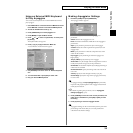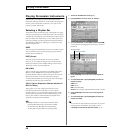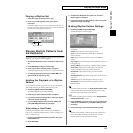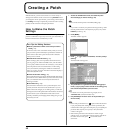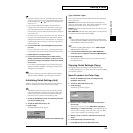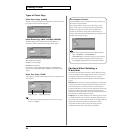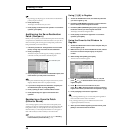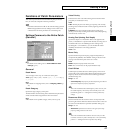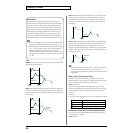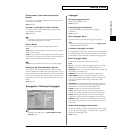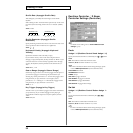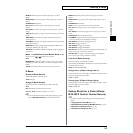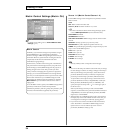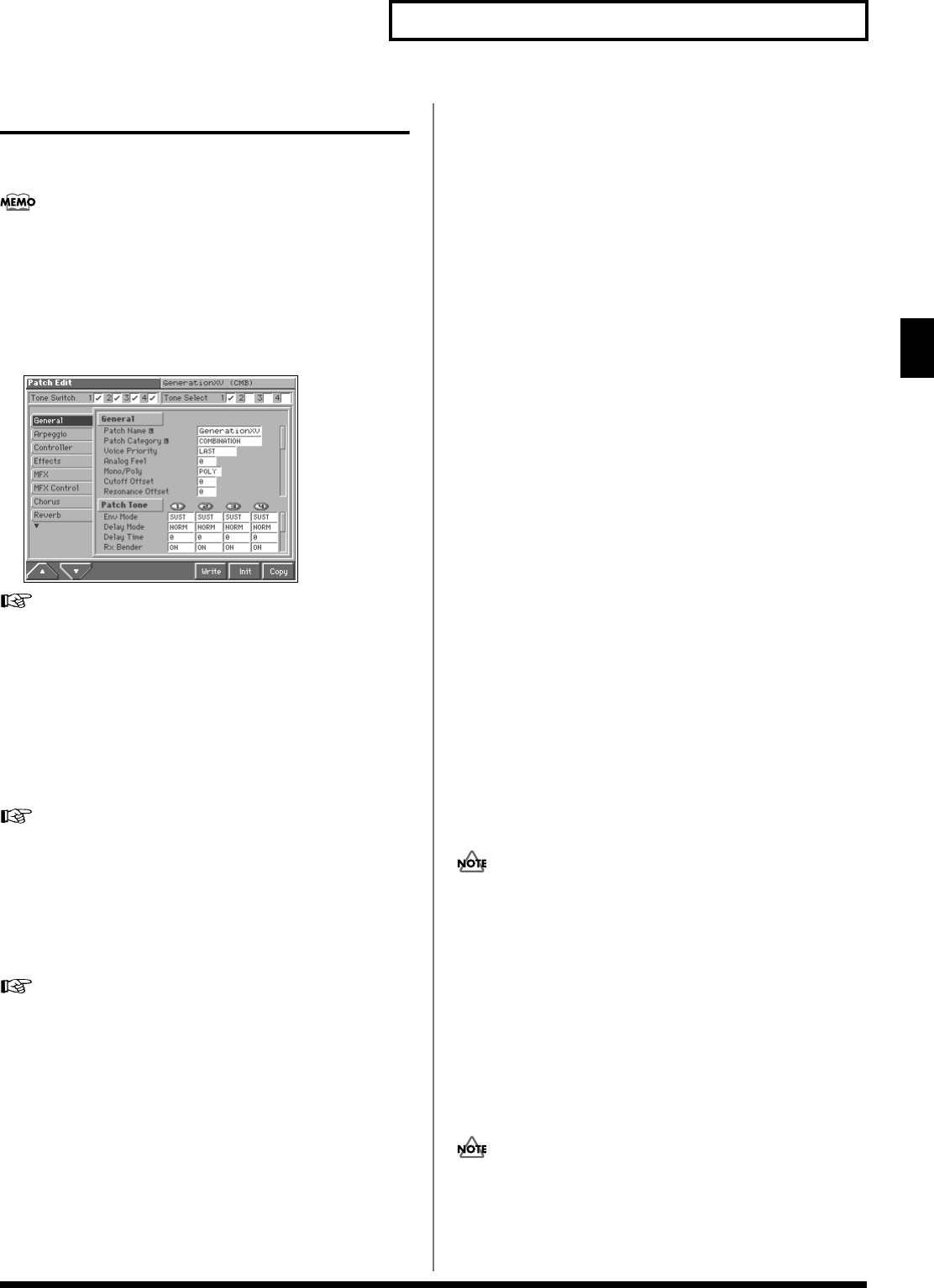
47
Creating a Patch
Creating a Patch
Functions of Patch Parameters
This section explains the functions the different patch parameters
have, as well as the composition of these parameters.
Parameters marked with a “★” can be controlled using specified
MIDI messages (Matrix Control). Settings in the Control screen
will determine how these parameters are controlled (p. 54).
Settings Common to the Entire Patch
(General)
fig.03-01_50
For details on the setting, refer to “How to Make the Patch
Settings” (p. 42).
General
Patch Name
You can assign a name of up to 12 characters to the patch.
Value: space, A–Z, a–z, 0–9, ! " # $ % & ’ ( ) * + , - . / : ; < = > ? @ [ \ ]
^ _ ` { | } → ←
For details on assigning names, refer to “Assigning a Name” (p.
30).
Patch Category
Specifies the type (category) of the patch.
The Patch Finder uses this setting. It also determines the phrase that
will be sounded when using the Phrase Preview function.
For details on the possible category names, refer to (p. 35).
Voice Priority
This determines how notes will be managed when the maximum
polyphony is exceeded (64 voices).
Value
LAST: The last-played voices will be given priority, and currently
sounding notes will be turned off in order, beginning with the first-
played note.
LOUDEST: The voices with the loudest volume will be given
priority, and currently sounding notes will be turned off, beginning
with the lowest-volume voice.
Analog Feel (Analog Feel Depth)
Specifies the depth of 1/f modulation that is to be applied to the
patch. (1/f modulation is a pleasant and naturally-occurring ratio of
modulation that occurs in a babbling brook or rustling wind.)
By adding this “1/f modulation,” you can simulate the natural
instability characteristic of an analog synthesizer.
Value: 0–127
Mono/Poly
Specifies whether the patch will play polyphonically (POLY) or
monophonically (MONO). The “MONO” setting is effective when
playing a solo instrument patch such as sax or flute.
Value
MONO: Only the last-played note will sound.
POLY: Two or more notes can be played simultaneously.
Cutoff Offset
Cutoff Frequency Offset alters the cutoff frequency of the overall
patch, while preserving the relative differences between the cutoff
frequency values set for each tone in the Cutoff Freq parameters
(PATCH/TVF) (p. 62).
Range: -63– +63
* Cutoff Frequency: the frequency at which the filter begins to have an
effect on the waveform’s frequency components.
This value is added to the cutoff frequency value of a tone, so if
the cutoff frequency value of any tone is already set to “127”
(maximum), positive “+” settings here will not produce any
change.
Resonance Offset
Resonance Offset alters the resonance of the overall patch, while
preserving the relative differences between the resonance values set
for each tone in the Resonance parameter (PATCH/TVF) (p. 63).
Range: -63– +63
* Resonance: emphasizes the overtones in the region of the cutoff
frequency, adding character to the sound.
This value is added to the resonance value of a tone, so if the
resonance value of any tone is already set to “127” (maximum),
positive “+” settings here will not produce any change.



